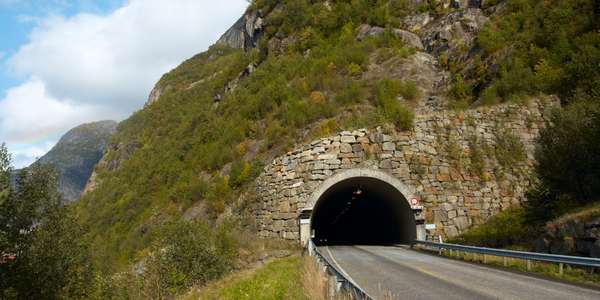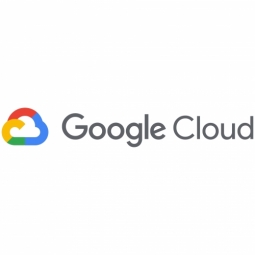Technology Category
- Application Infrastructure & Middleware - Event-Driven Application
- Infrastructure as a Service (IaaS) - Cloud Computing
Applicable Industries
- Construction & Infrastructure
- Retail
Applicable Functions
- Logistics & Transportation
- Sales & Marketing
Use Cases
- Construction Management
- Retail Store Automation
Services
- Cloud Planning, Design & Implementation Services
- Training
About The Customer
Altavia is a leading provider of marketing, publishing, and sales communication solutions for retail companies and brands. Founded in 1983, the company operates in 45 countries and employs more than 2,500 people. Altavia helps retailers navigate the multichannel landscape, providing services that cover everything from in-store and digital communications to print management, production, and implementation. The company serves 500 major retail brands every day, including Coca-Cola, Decathlon, L’Oréal, Carrefour, Club Med, and Samsung. Altavia's mission is to help its clients increase their sales by improving the quality of their client relations, specializing in the retail sector and offering expert knowledge to help clients optimize their communications across all their channels.
The Challenge
Altavia, a global retail marketing and publishing service provider, was facing challenges with its legacy infrastructure. The company's infrastructure, which ran on 300 servers located at its headquarters in Paris, was outdated and causing issues for the growing business. The in-house developed ERP system suffered from weekly crashes, and services for clients in distant locations like Japan, Korea, and Canada were significantly slower than for those in Europe. Altavia needed to keep the technology underpinning its services up-to-date to manage its printing processes efficiently, optimize logistics for production and distribution, and use data analysis to understand clients' data. In 2019, Altavia decided to renew its legacy infrastructure, which required significant investment in hardware to improve its performance and reliability.
The Solution
Altavia decided to migrate its application infrastructure to Google Cloud to transform the way IT supports the business and help teams across the company work in a more dynamic way. The company chose Linkbynet as its implementation partner for the migration. Altavia's key applications, an online tool for clients to manage the buying process and their assets, and an internal ERP tool to manage logistics, are now powered by Google Kubernetes Engine. Other applications are hosted on Compute Engine, with plans to switch all applications to run on Kubernetes clusters. Data is aggregated on BigQuery, using Pub/Sub to manage asynchronous data ingestion workflows. Altavia also uses Cloud SQL as its fully managed SQL database and Cloud Functions for serverless operations. For networking and connectivity, Altavia uses Cloud VPN and Cloud DNS, as well as Cloud Armor to help protect against denial of service and web attacks.
Operational Impact
Quantitative Benefit

Case Study missing?
Start adding your own!
Register with your work email and create a new case study profile for your business.
Related Case Studies.

Case Study
IoT System for Tunnel Construction
The Zenitaka Corporation ('Zenitaka') has two major business areas: its architectural business focuses on structures such as government buildings, office buildings, and commercial facilities, while its civil engineering business is targeted at structures such as tunnels, bridges and dams. Within these areas, there presented two issues that have always persisted in regard to the construction of mountain tunnels. These issues are 'improving safety" and "reducing energy consumption". Mountain tunnels construction requires a massive amount of electricity. This is because there are many kinds of electrical equipment being used day and night, including construction machinery, construction lighting, and ventilating fan. Despite this, the amount of power consumption is generally not tightly managed. In many cases, the exact amount of power consumption is only ascertained when the bill from the power company becomes available. Sometimes, corporations install demand-monitoring equipment to help curb the maximum power demanded. However, even in these cases, the devices only allow the total volume of power consumption to be ascertained, or they may issue warnings to prevent the contracted volume of power from being exceeded. In order to tackle the issue of reducing power consumption, it was first necessary to obtain an accurate breakdown of how much power was being used in each particular area. In other words, we needed to be able to visualize the amount of power being consumed. Safety, was also not being managed very rigorously. Even now, tunnel construction sites often use a 'name label' system for managing entry into the work site. Specifically, red labels with white reverse sides that bear the workers' names on both sides are displayed at the tunnel work site entrance. The workers themselves then flip the name label to the appropriate side when entering or exiting from the work site to indicate whether or not they are working inside the tunnel at any given time. If a worker forgets to flip his or her name label when entering or exiting from the tunnel, management cannot be performed effectively. In order to tackle the challenges mentioned above, Zenitaka decided to build a system that could improve the safety of tunnel construction as well as reduce the amount of power consumed. In other words, this new system would facilitate a clear picture of which workers were working in each location at the mountain tunnel construction site, as well as which processes were being carried out at those respective locations at any given time. The system would maintain the safety of all workers while also carefully controlling the electrical equipment to reduce unnecessary power consumption. Having decided on the concept, our next concern was whether there existed any kind of robust hardware that would not break down at the construction work site, that could move freely in response to changes in the working environment, and that could accurately detect workers and vehicles using radio frequency identification (RFID). Given that this system would involve many components that were new to Zenitaka, we decided to enlist the cooperation of E.I.Sol Co., Ltd. ('E.I.Sol') as our joint development partner, as they had provided us with a highly practical proposal.

Case Study
Improving Production Line Efficiency with Ethernet Micro RTU Controller
Moxa was asked to provide a connectivity solution for one of the world's leading cosmetics companies. This multinational corporation, with retail presence in 130 countries, 23 global braches, and over 66,000 employees, sought to improve the efficiency of their production process by migrating from manual monitoring to an automatic productivity monitoring system. The production line was being monitored by ABB Real-TPI, a factory information system that offers data collection and analysis to improve plant efficiency. Due to software limitations, the customer needed an OPC server and a corresponding I/O solution to collect data from additional sensor devices for the Real-TPI system. The goal is to enable the factory information system to more thoroughly collect data from every corner of the production line. This will improve its ability to measure Overall Equipment Effectiveness (OEE) and translate into increased production efficiencies. System Requirements • Instant status updates while still consuming minimal bandwidth to relieve strain on limited factory networks • Interoperable with ABB Real-TPI • Small form factor appropriate for deployment where space is scarce • Remote software management and configuration to simplify operations

Case Study
Splunk Partnership Ties Together Big Data & IoT Services
Splunk was faced with the need to meet emerging customer demands for interfacing IoT projects to its suite of services. The company required an IoT partner that would be able to easily and quickly integrate with its Splunk Enterprise platform, rather than allocating development resources and time to building out an IoT interface and application platform.

Case Study
Digital Retail Security Solutions
Sennco wanted to help its retail customers increase sales and profits by developing an innovative alarm system as opposed to conventional connected alarms that are permanently tethered to display products. These traditional security systems were cumbersome and intrusive to the customer shopping experience. Additionally, they provided no useful data or analytics.

Case Study
How Sirqul’s IoT Platform is Crafting Carrefour’s New In-Store Experiences
Carrefour Taiwan’s goal is to be completely digital by end of 2018. Out-dated manual methods for analysis and assumptions limited Carrefour’s ability to change the customer experience and were void of real-time decision-making capabilities. Rather than relying solely on sales data, assumptions, and disparate systems, Carrefour Taiwan’s CEO led an initiative to find a connected IoT solution that could give the team the ability to make real-time changes and more informed decisions. Prior to implementing, Carrefour struggled to address their conversion rates and did not have the proper insights into the customer decision-making process nor how to make an immediate impact without losing customer confidence.








